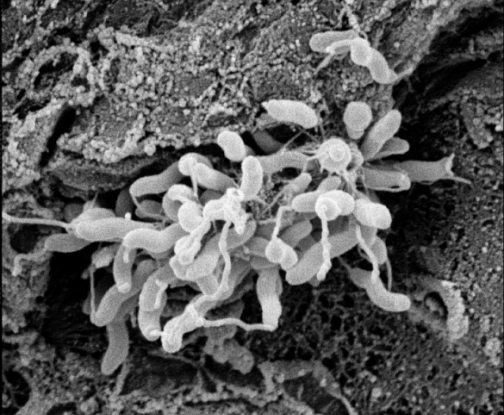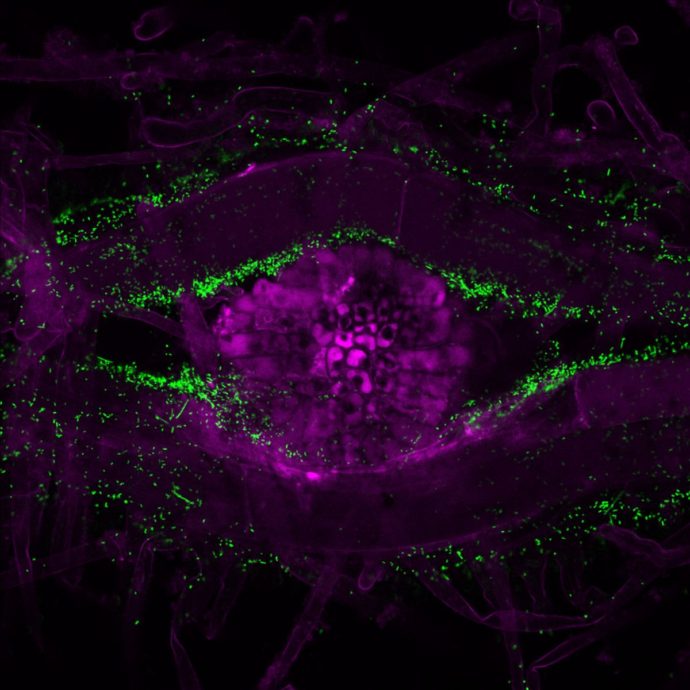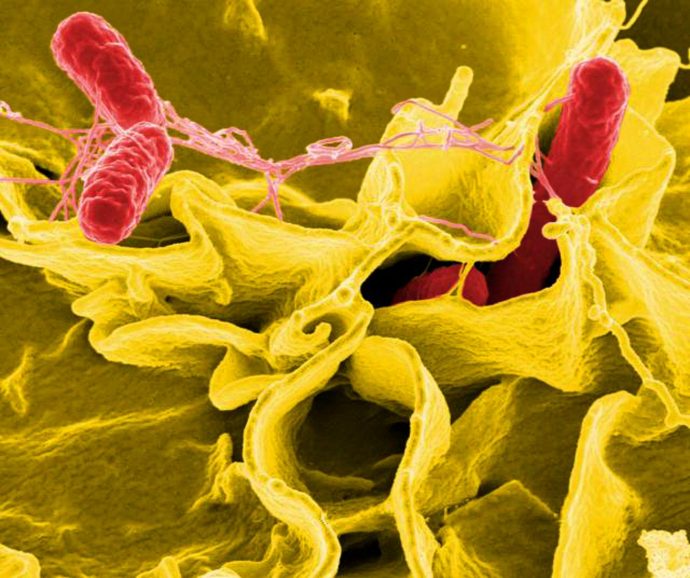Campylobacter
Campylobacter is the most common cause of bacterial foodborne illness in the UK. Infection can cause diarrhoea, blood in faeces, fever, stomach cramps and occasionally nausea and vomiting. Usually, people recover within around a week but sometimes infection causes other problems including irritable bowel syndrome, reactive arthritis and problems with the peripheral nervous system.
Raw chicken is the most common source of infection. It is important not to wash raw chicken as this can splash the bacteria onto other foods and surfaces. Even one drop of juice from raw poultry can have enough Campylobacter in it to infect a person. Cooking kills Campylobacter. Campylobacter can also be found in unpasteurised (raw) dairy products and other types of meat.


Shiga toxin-producing Escherichia coli
Escherichia coli normally lives in the intestine of mammals and birds. Most types of E. coli are harmless but some types can cause severe illness. The most important of these is called Shiga toxin-producing Escherichia coli (STEC). This is because it can produce a toxin called Shiga toxin. There are many types of STEC that cause disease, the most common being E. coli O157, but there are other types that can cause illness and these are known as non-O157 STEC. Risky foods include raw meat, especially minced meat and unpasteurised (raw) dairy products. Meat and milk can become contaminated if they come into contact with infected faeces or intestines during processing. Outbreaks have also been linked to salad and vegetable leaves. This can occur if contaminated water is used for irrigation. Infection can cause diarrhoea, blood in faeces, vomiting, stomach cramps and fever. Sometimes the infection becomes more serious, particularly in young children. STEC can cause haemolytic uremic syndrome which affects the kidneys and can be life-threatening.
Salmonella
Salmonella is the second most commonly reported cause of bacterial infectious intestinal disease in Scotland after Campylobacter, with approximately 800 cases reported each year. Symptoms of Salmonella infection include diarrhoea, stomach cramps, fever, nausea and vomiting. Sometimes people become seriously ill with dehydration. Salmonella has been found in many food products including unpasteurised (raw) dairy products, eggs and products containing raw meat and poultry. Salmonella can also be associated with fruit, such as tomatoes and melons and vegetables, including lettuce and sprouted seeds and can be found in high fat, low moisture foods such as chocolate and peanut butter. Salmonella can multiply in food if the food isn’t chilled so there only needs to be a small number of bacteria present in food for them to cause disease. Salmonella can be spread from pets such as reptiles, cats and dogs to people. They can also be spread from person to person through poor hygiene. Make sure you wash your hands regularly, and after handling and feeding your pets.


Listeria
Listeria monocytogenes causes a disease called listeriosis. It is an important bacteria to be aware of, not because of the number of people each year affected but due to the severity of infection and the loss of life it causes. In most people, infection with Listeria is not serious and causes mild symptoms such as a high temperature, aches and pains, chills, vomiting and diarrhoea. Occasionally, especially in vulnerable people such as pregnant women, the elderly, children and those with a weakened immune system, infection can spread to other parts of your body causing diseases such as meningitis. Listeria has been found in pate, cooked sliced meat, soft and unpasteurised cheeses, smoked fish, cooked shellfish and ready-to-eat food such as pre-packed sandwiches. Listeria is unsual because it can grow at low temperatures, including refrigeration temperatures of below 5°C. It is, however, killed by cooking food thoroughly and by pasteurisation. It is important to keep risky foods cold, follow the instructions on the labels (particularly about how long to use once opened) and use foods by their use-by-dates.
Read also

Foodborne pathogens
How to reduce the risk
To lower the risk of infection and protect you and your family against infectious foodborne disease there are certain things you can do in your own kitchen.

Farming and environment
Farm animal diseases
Animals, like humans can become infected with microbes and suffer from a wide variety of diseases.

Foodborne pathogens
Antibiotic resistance
Antibiotics are used to treat bacterial infections but bacteria are becoming resistant to these drugs and some infections can no longer be treated.